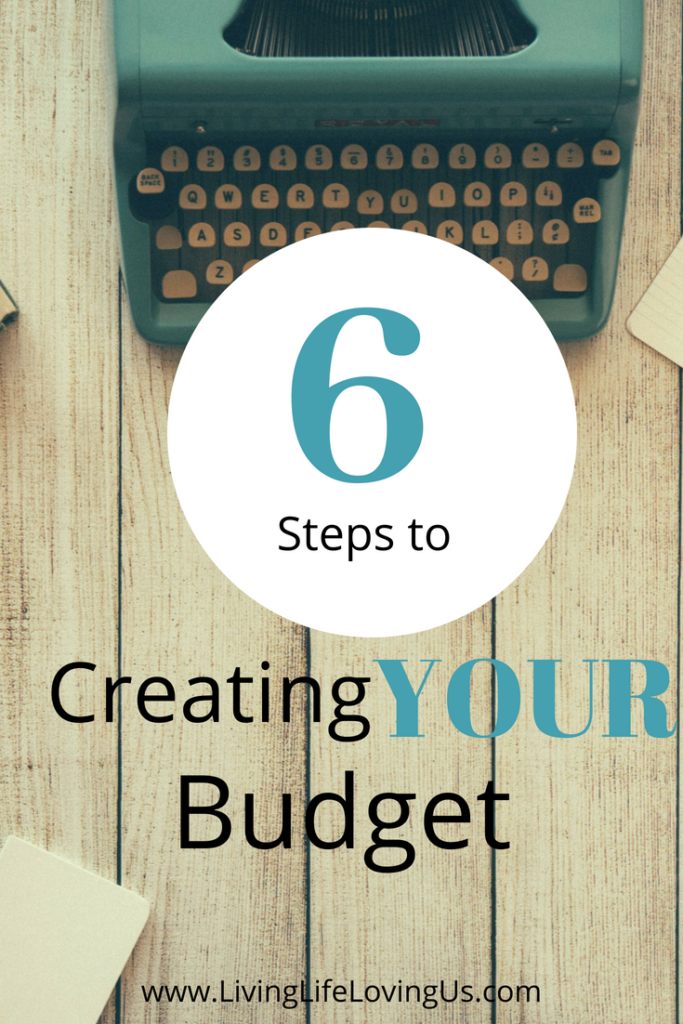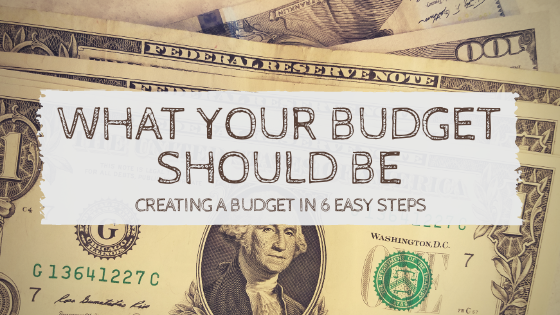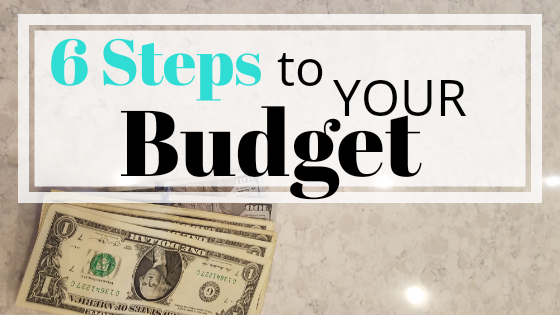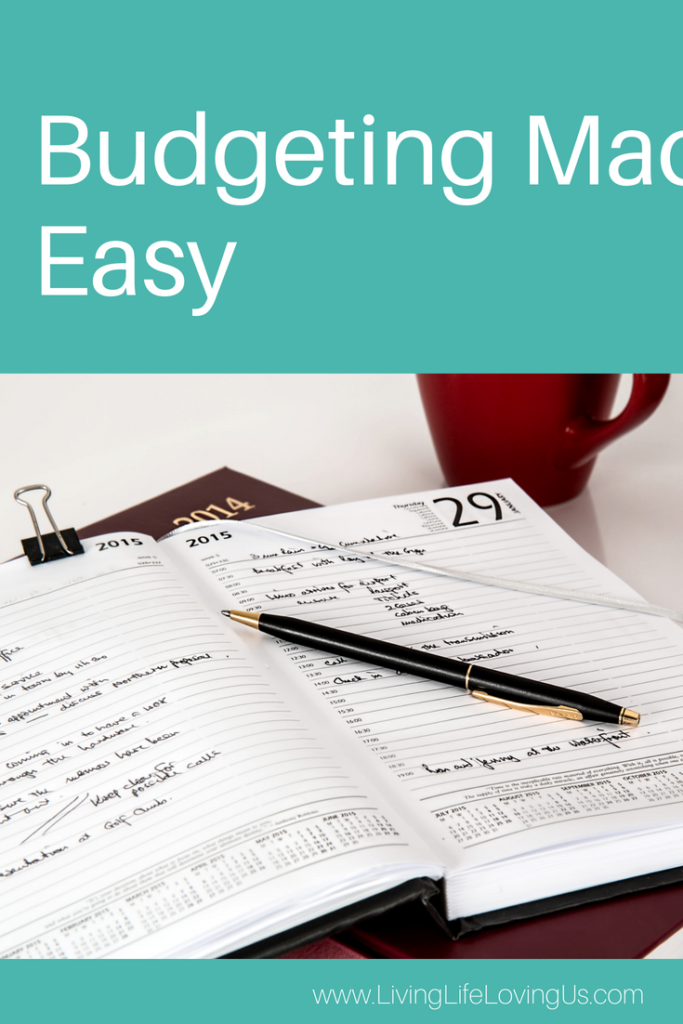When we started this journey it was a completely uneducated and archaic attempt at creating our budget. I spent hours writing everything down with pen and paper, categorizing each item, and coming up with our max and average spent monthly in each of those categories. Quite the task, but do you know what? That was just the smack of reality that we needed.
When creating a budget I know it can be a little overwhelming and quite confusing. Where do you start? How many categories are there? How much should I budget for each category? Even though each person, each family’s, budget is unique, there are some basic principles for creating a budget.
Luckily, since you’re on this site, you already know there are so many great resources out there to help you create a budget. We’ve come a long way from that pen and paper breakdown, but the basic steps are the same. You’re just fortunate enough to have them laid out for you instead of the frustration of trying to figure it out yourself! Thank you technology.
The whole process can be broken down in SIX easy steps. It’s suggested that you look at one step at a time. Whether you’re a first time budgeter or if you’re re-evaluating your current budget, it’s important that you put a good deal of focus on each step in order to make it the best it can be. So pin, save, or bookmark this page to reference back to!
You’re Not Going To Budget if You’re Not Ready to Budget.
I’m not trying to deter you. I’m trying to set you up for succeeding. You need to know your goal, have a plan to achieve it, and stick to it! Whether your goal is to pay off $40,000 in 5 years or $120,000 in 12 months, it’s your goal. Whether you choose to slow your rate of payoff down a bit so that you’re still able to travel, or if you live off of “rice and beans” in order to get out of debt in record time, it’s your goal. Remember that.
Even though the process was terrifying for me in the beginning, today it is seamlessly incorporated in to our every day lives. My only regret is that we didn’t do it sooner. A small amount of change could have saved us hundreds of thousands of dollars. Between car loans, re-financed mortgages, monthly wasted spending, and loss of interest we could have made, yep, it would have actually been that much.
I hate even thinking about the amount of money it could have saved us, I’m just glad we made the change when we did. Like I said, it’s scary at first, but a few months in and you’ll feel the stress lifting off your shoulders as you have more and more “extra” money at the end of the month.
“Living on a budget doesn’t have to mean depriving yourself of the things you love. It simply means that you spend money on the things that bring you value and cut out the rest. You would be surprised how easy it is.”
So, if you’re ready to make a change then keep reading to figure out what YOUR budget should be, and start saving today!
What Your Budget Should Be
*There are 2 sides of budgeting – income and outgoing.
*1. Calculate Your Income
First of all, you can’t spend more money than what you make. Easy right? Well, spending more than what you make is what got you, me, and every other person out there in debt. It simply doesn’t work. Therefore, your spending side must be less than your income side of the budget.
Incomes vary for nearly every person. Take your lowest average income to set the basis for your budget. If you plan your budget based on this low number than you’ll never find yourself searching for money to pay off the rest of your budget, AND anything more than that low number feels like extra cash!
-For example, you may receive the occasional holiday pay, weekend pay, or put a few extra hours in per week. Don’t use those as your base for the budget.
Likewise, outgoing can vary a bit as well. Water bill, electric, and even cell phone bills can vary a bit each month. So…take the highest average for outgoing. If the bill is less, what does that mean? Extra cash!
But how do you know what each category should be?
*2.Find Out What You Spend
If you have multiple credit cards, checking accounts, or other places you’re pulling money from this could get a little tedious. I PROMISE it is worth it. You do this once and you will never have to do it again! Plus knowing you put time and effort in to this means you will be more likely to stick to the budget.
It’s likely that your bank or credit cards have a breakdown of your spending laid out for you already, but does it REALLY show you which category you’re spending in? How do they categorize that trip to Wal-mart where you could have bought anything from milk to car tires? What about the snacks you bought at the gas station? Take the time to really look at what you’re spending your money on.
Please, please, do not try to make up numbers to go by for your budget. Don’t google someone else’s budget either. This is YOUR budget. It’s what you spend and no one else’s budget will be quite like yours.
Spending
Ok, you need to look at the last 3 months of spending, every dollar. You’re going to want to break up your spending in to categories. For example: groceries, gas, restaurants, clothing, medical, pet care, child care (including baby sitting), subscriptions, etc.
You also want to look at the spending that is pretty much constant such as your mortgage, insurance, water, electric, memberships like the gym. Things such as your electric and water bills may vary a bit from month to month, but it’s a constant that you’re going to have them. So, take the highest number and use that for a monthly basis on which to plan your budget.
-For example: During the winter our electric bill is about $100, but during the summer it shoots up to nearly $200. Therefore, EVERY month we budget $200 for electric and if it comes out to be less then we put that money in to savings!
By the way, miscellaneous spending is all of the spending that you don’t, or can’t, make a category for. For us this include clothing, pet supplies, make up, gardening, toys, trips to the zoo, movies, etc. We didn’t want to have 100 categories so we stuck to the basics. It made it easier for us to keep budgeting if we didn’t have so many things to juggle.
Here are our categories as an example (not in prioritized order):
- Mortgage
- HOA dues
- Water
- Electricity
- Auto Gas & Oil
- Groceries
- Restaurants
- Jimmy’s Work Food
- Childcare
- Gym Membership
- Protein (Yes, my hubby gets a protein line item)
- Nails (but that means I also get a line item for mani/pedi’s – See, it’s YOUR budget!)
- Miscellaneous
- Life Insurance
- Auto Insurance
- Vacation Fund
- Investment Money
Remember that your categories may vary quite a bit. This is when we were nearly debt free. We didn’t always have “investment money”. We used to have categories like: Chase, Visa, American Express, IVF medications, hospital stay, 2nd car payment, and other medical bills.
Can you imagine when all of that negative turns in to positive? When all of the money you are paying out becomes opportunity to invest, travel more, or put a down payment on your own home.
*3.Prioritize Your Spending
One you have laid out all of the categories and see how much you spend, you have to now line them up based on priority.
So the top of the list are things that you simply MUST pay such as your mortgage payment and utilities. Basically food, water and shelter will always be at the top of EVERYONE’S list.
Next come payments such as car, credit card minimums, student loans, or any other payment you MUST make monthly.
Finally you can lay the rest out in whatever order they are important to YOU. Sometimes it is easier to use a template of someone else’s budget. BUT remember that their priorities are not the same as yours and your budget will not look like theirs in the end.
For instance, my hubby and I put our vacation budget at a high priority, higher than clothing, higher than eating out, higher than most things. Traveling is a big part of our lives and we feel like we get a lot of opportunity to spend quality time as a family while enjoying new experiences. So we hold a huge value on traveling. However, this means that I have to sacrifice in other areas so I choose to limit my spending on restaurants, miscellaneous items such as clothing or make up, and we put all of that saved money in to the vacation budget.
This is not the same for everyone, and that’s OK! That is the beauty of creating YOUR budget.
For some people, traveling may not be important. It may be more important for you to pay off those debts as fast as possible, or save up for a purse you really want, or a new home. That’s what budgeting is all about. Making the most of the money you DO have in order to build a life that you find value in! Everyone’s budget will be different in the end.
*4.Do a Little Balancing Act
So you’ve laid out your income, figured out your spending, and prioritized your categories. Now, it’s time to put some numbers down.
First, put in your constants: mortgage, car payment, insurance, water, electric, minimum payments on all of your debts.
Then, take the highest amount you spent in each category and plug those numbers in.
Chances are at this point your spending is MUCH higher than your income. Am I right? It’s ok. This is where the actual budgeting and a little bit of creativity come in.
When we first did our budget I realized that we were spending nearly $1,000 on groceries and around $800 on eating out PER MONTH. There were 2 of us at the time! Besides the fact that that is WAY to much to be spending on 2 people for food, we had no idea we were spending that amount! I found that a majority of the groceries came from wasting food, buying things when they weren’t on sale and not sticking to our grocery list. That helped us cut our budget in HALF, even after adding babes and her food. The restaurants? It wasn’t even that we were going out every weekend and dining at the fanciest of restaurants. Most of that was just running and grabbing a quick meal or ordering in. It was crazy how fast it added up and how simply budgeting 2 categories saved us over $1,000 per month.
That’s $1,000 that could be put towards our debt each month without much effort!
Look at your outrageous numbers and talk to your partner in order to come up with a reasonable number. *TIP* Don’t set your budget TOO low right out of the gate. It just sets you up for failure.
Related: How to Cut Your Grocery Bill In Half
You’ve got your constants. Any money left over after the constants are what you have to budget for non-essential items like nails, savings for a future car, investment money, or whatever you like.
*If your constants are higher than your income then you know you may have a bit of a problem. Until you can make some adjustments like paying off credit cards, selling a car (or paying it off), or even downsizing your home, then you’re going to need to focus on increasing your income. Is it possible for you to work overtime? Look for a side job? There are so many creative things to do for a little extra money, and many are working from home.
This is not a long term solution. Budgeting is about using the money you have wisely and not working to pay for things you don’t NEED or VALUE. Maybe there are some things you can live without until you pay off debt…
*5.Time to Make Some Cuts
I’m sorry to say, but this may mean that some things have to get cut from the list completely. Depending on your situation, there simply might not be enough money coming in to pay for every category going out.
Start at the bottom, with the categories that have the least priority in your life. Can any of those be decreased or even taken off the budget?
I know HAVING a cell phone is a priority for most people, but there are ways to decrease your bill. You may not be able to upgrade to the iPhone 30, but you’ll have a phone. You may have to change providers or plans, but there are ways to decrease your bill.
Take, another good look at the budget and see where you can tighten things up a bit. Did you set $300 for restaurants each month? $500 for miscellaneous spending? Remember to focus on the things you find the MOST value in and tighten up or completely forget the rest.
Can’t find any categories that you can decrease the budget on? Time to make some cuts.
For example, we had subscriptions to Netflix, Amazon Fire, Hulu, Xbox Live, Men’s Health, Women’s Health, Fitness Magazine, Bark Box, Baby Box, Birch Box, and a few others. Did we need those?! NO! You can see we all have some wasteful spending, and those were some things I would GLADLY give up to pay off debt and travel more. Instantly a couple hundred dollars per month back in our pockets! Those items sound so cheap individually, but when combined….PHEW what were we thinking?
*6.Put Your Plan in Action
Once you’ve created all of your categories and everything balances in the budget, it’s time to put it in to action!
The first few months are test months to #1 see where you need to make adjustments and #2 see if you can stick to your budget. Don’t worry, just because your budget doesn’t work perfectly the first month doesn’t mean you’re a failure. That’s why these are trial months! You’re going to find your sweet spot so don’t give up.
You may notice that you actually need to spend more on groceries and can spend less on gas or vice versa. You may notice that you’re spending money simply because it’s budgeted for that category and not because you NEED to.
For example, when we had the restaurant budget at $250 I found myself wanting to go out more because we had the money in the budget. We cut the budget back to $150 and it’s perfect fit for us! Yes, it takes a conscious effort to plan when you’re going to eat a good meal out instead of grabbing something quick, but the food we eat at home ends up being far better than what we would have grabbed out. (If not being able to cook is your excuse for eating out that’s a bad excuse ? Anyone can cook, you just have to learn the basics. Check out our cooking with a fireman section for a little inspiration)
It took us about 6 months to really get in to the flow of things, to balance our budget to the point where it worked perfectly for our family. Keep making small adjustments, don’t blame one another for slip ups, and stay at it. Each month is easier and easier.
Each month will be slightly different as well. You may have a large expense coming up like renewing a license, car maintenance, needing a new piece of furniture, or even family in town so you know your grocery bill will be higher. You will need to adjust accordingly.
Have a big expense? Maybe pay a little less to debt, cut back miscellaneous spending for the month, or even….less to the travel budget. It’s all a balancing act. You can’t spend more than you make.
The key to these adjustments and to sticking to your budget in general is communicating with your partner. Each month sit down and go over the next months budget, make adjustments as necessary and know you’re both on the same page with the same goals!
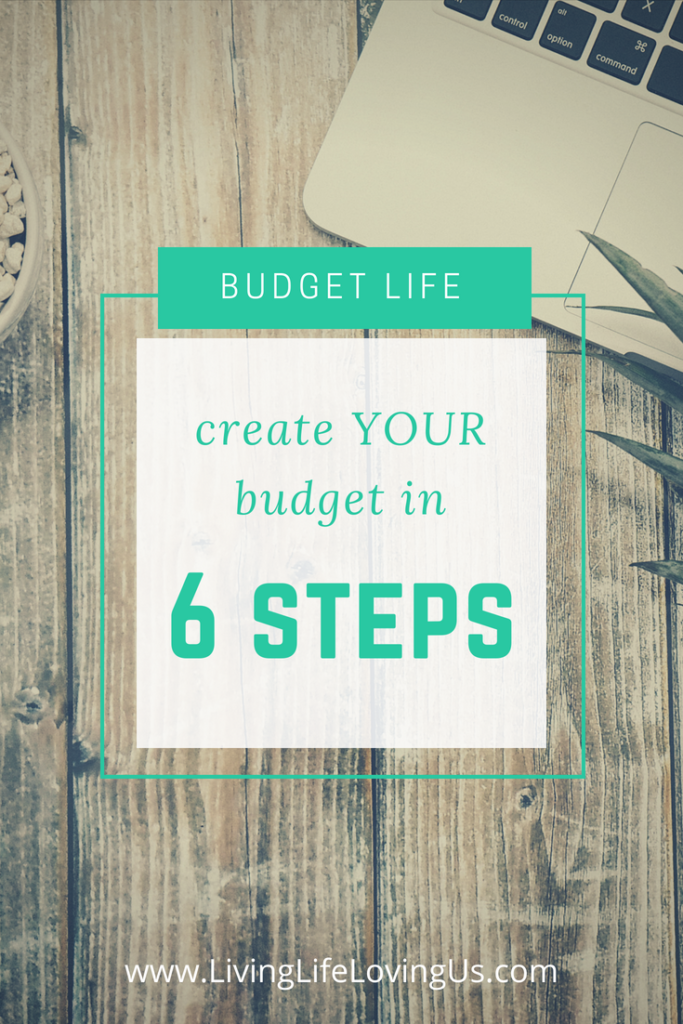
*When the Budget WORKS
I know the idea is to zero out your money at the end of the month, but the exciting part about estimating your income low and your outgoing high is that you may actually have EXTRA money at the end of the month!
It’s up to you how this money can be spent. You can put it towards debt, put it in savings, invest it, or even call it “fun” money and buy something you’ve really been wanting. It’s YOUR budget and now YOUR extra money.
No matter what you decide to do with it, it won’t be stressful. Having extra money has never been considered a problem.
Hopefully you’ve learned what your budget should be and how to create that budget. I can promise you that the work it takes to get it started will pay off in the end more than you ever could imagine. We have gone from wondering how we are going to pay a bill to wondering what we are going to do with the money at the end of the month in less than 24 months. It’s quite in incredible feeling which is why both my husband and myself are so passionate about sharing what we’ve learned.
“Budgeting is not something you can decide to do without being ready. It takes a little bit of discipline and planning that, frankly, some people are just not ready for. If you try to budget without having a goal to reach, your partner on board, and your head in the right place then you’re going to fail. Set yourself up for success and look at WHY you want to create a budget. Whether it’s getting out of debt, setting yourself up for retirement, or simply decreasing some financial stress, it doesn’t matter. It’s YOUR why and that will be your basis for success!”
Some other helpful links:
- Ultimate Side Hustle
- What Is Financial Independence?
- How We Paid off $120,000 in LESS than 24 months
- How to do a Monthly Budget Meeting
- Destroying the Stigma of Budgeting “I could never life like that”
- Talking to Your Spouse about MONEY
- 5 Tips for Budgeting When You Know Nothing
- Let’s Talk Budget
Want more from Living Life Loving Us? Sign up below for free updates! No spam just friendly hello’s and extra tips.
